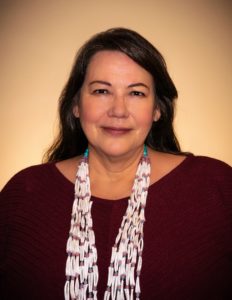
By Jodi RavePublisher of Buffalo’s Fire
I was recently on vacation with my 11-year-old granddaughter when her nose started to bleed on two separate occasions. I talked to her dad about it. I could tell he was looking to me for assurance she was all right and that nosebleeds might be a common occurrence for a little girl. I told my son his daughter would be OK.

But I am concerned. My son and his family live on the Fort Berthold Reservation about three-quarters of a mile from Marathon Oil fracking operations and natural gas flares. Our family lives in the Bakken oil fields where flares burn night and day in western North Dakota. In a lengthy fracking review five years ago, the New York Department of Health found environmental problems that could adversely affect public health.
New York health professionals also discovered that people living around fracking areas had symptoms of skin rash, nausea or vomiting, abdominal pain, breathing difficulties, cough, anxiety, stress, headache, dizziness, eye irritation, throat irritation and nosebleeds. In the interest of state citizens, New York banned fracking in favor of further review.
But I am concerned. My son and his family live on the Fort Berthold Reservation about three-quarters of a mile from Marathon Oil fracking operations and natural gas flares. Our family lives in the Bakken oil fields where flares burn night and day in western North Dakota. In a lengthy fracking review five years ago, the New York Department of Health found environmental problems that could adversely affect public health.
New York health professionals also discovered that people living around fracking areas had symptoms of skin rash, nausea or vomiting, abdominal pain, breathing difficulties, cough, anxiety, stress, headache, dizziness, eye irritation, throat irritation and nosebleeds. In the interest of state citizens, New York banned fracking in favor of further review.
Today, a comprehensive 361-page report titled, “Compendium of Scientific, Medical, and Media Findings Demonstrating Risks and Harms of Fracking” relies on 1,500 studies, government reports and investigative reporting. The report is blistering and bleak: “All together, the data show that fracking impairs the health of people who live nearby, especially pregnant women, and swings a wrecking ball at the climate,” said Sandra Steingraber, co-founder of Concerned Health Professionals of New York. “We urgently call on political leaders to act on the knowledge we’ve compiled.”
Meanwhile, unconventional oil shale production rages on as does the burning of natural gas at well sites. Satellite images show natural gas flares lighting up the Bakken like a monotone Christmas tree. Oil companies burn less lucrative natural gas in the Bakken typically because oil production outpaces the infrastructure needed to transport the gas. Globally, flaring increased by some 3% in 2018 to 145 billion cubic meters. That’s the equivalent of total annual gas consumption of Central and South America, according to the Global Gas Flaring Reduction Partnership, a World Bank-led industry-government coalition.
The global increase in flaring was associated with increased oil production in the United States where flaring rose by about 48% from 2017 to 2018 and oil production jumped 33%. Shale oil production in the Bakken increased by about 29%.
While state, tribal and corporate coffers get fat locally and nationally, the health of 17.6 million Americans is at risk when they live within a mile of an active oil or gas well. That number includes 1.4 million young children and 1.1 million elders, according to the compendium released by the Nobel Prize winning Physicians for Social Responsibility and Concerned Health Professionals of New York.
North Dakota’s Three Affiliated Tribe’s leaders, state politicians and oil companies – all so eager to drill – are playing Russian roulette with people who live near and work in fracking areas. Their exposure to chemicals needs to be tracked. “We desperately need biomonitoring data from these people,” said Susan Nagel who led a study reported in the compendium. “What are people actually exposed to? What are the blood levels of people living in these areas? What are the levels in the workers?”
Jodi Rave is the executive director of the Indigenous Media Freedom Alliance. She is a Nieman Fellow of journalism at Harvard. This story was first published as a special to the Forum News Service.
© Buffalo's Fire. All rights reserved.
This article is not included in our Story Share & Care selection.The content may only be reproduced with permission from the Indigenous Media Freedom Alliance. Please see our content sharing guidelines.







